Storied histories of brands in Singapore
Many of Singapore’s oldest brands have built lasting legacies of trust and service.
Sign up now: Get ST's newsletters delivered to your inbox

Many of Singapore’s oldest brands, such as Ayam Brand and Wearnes Automotive, have built lasting legacies of trust and service.
PHOTOS: AYAM BRAND, ST FILE
Follow topic:
1. Ayam Brand
Ayam Brand was started in Singapore in 1892 by Frenchman Alfred Clouet and is still known today for products such as canned sardines, tuna and curry paste.
Its distinctive rooster logo reflects its French origins, while the name “Ayam” comes from the Malay word for chicken.
According to the brand’s website, Clouet was “a French adventurer of taste” from the port city of Le Havre. He set aside his father’s tailoring business to explore Asia and registered A. Clouet & Co in Singapore in 1892. The firm initially imported premium European goods like Menier chocolate, Bordeaux wines and perfumes.
By 1899, Clouet had turned his attention to canned food, which was considered a luxury at the time. He began with sardines, later adding mushrooms and peas, though sardines proved the most popular.
Their cans bore the company’s rooster emblem. Soon, customers in Singapore began referring to the brand as “chop ayam”, which means “the chicken brand” in Malay. The company decided to use the trademark Ayam Brand for its products.
In 1954, A. Clouet was acquired by French firm Denis Freres, now known as Maison Denis. Today, Ayam Brand is sold in more than 30 countries and produces more than 60 million cans of food annually, including noodles, sauces and cooking ingredients like coconut milk.
“Our success has been made possible thanks to the incredible support of our consumers,” says Mr Norman Delouis, general manager of A. Clouet (Singapore), which is part of Maison Denis.

Ayam Brand products have long been staples in Singapore homes, says Mr Norman Delouis, general manager of A. Clouet (Singapore), which distributes the products here.
PHOTO: A. CLOUET (SINGAPORE)
Ayam Brand products have long been staples in Singapore homes, he says. “We are proud to be part of everyday meals, festive dishes, and even emergency food supplies during the Covid-19 pandemic.”
Globally, the company employs close to 2,000 people. Its products are mainly produced in Malaysia, while its team in Singapore is engaged in procurement, marketing, sales, research and development, and finance.
The brand continues to evolve. In March 2025, it launched four high-protein pulled chicken flavours – truffle mayonnaise, buffalo, honey mustard and cajun – which can be used in sandwiches, tacos, rice and noodles.
Pulled chicken is cooked chicken that is pulled off the bones, and shredded to create a uniform texture.
Healthier options with less sugar and sodium are also part of its range. Sustainability is a growing focus. The brand has introduced more eco-conscious packaging and ready-to-eat meals tailored to modern lifestyles.
“We are definitely still going strong – stronger than ever, in fact,” says Mr Delouis.
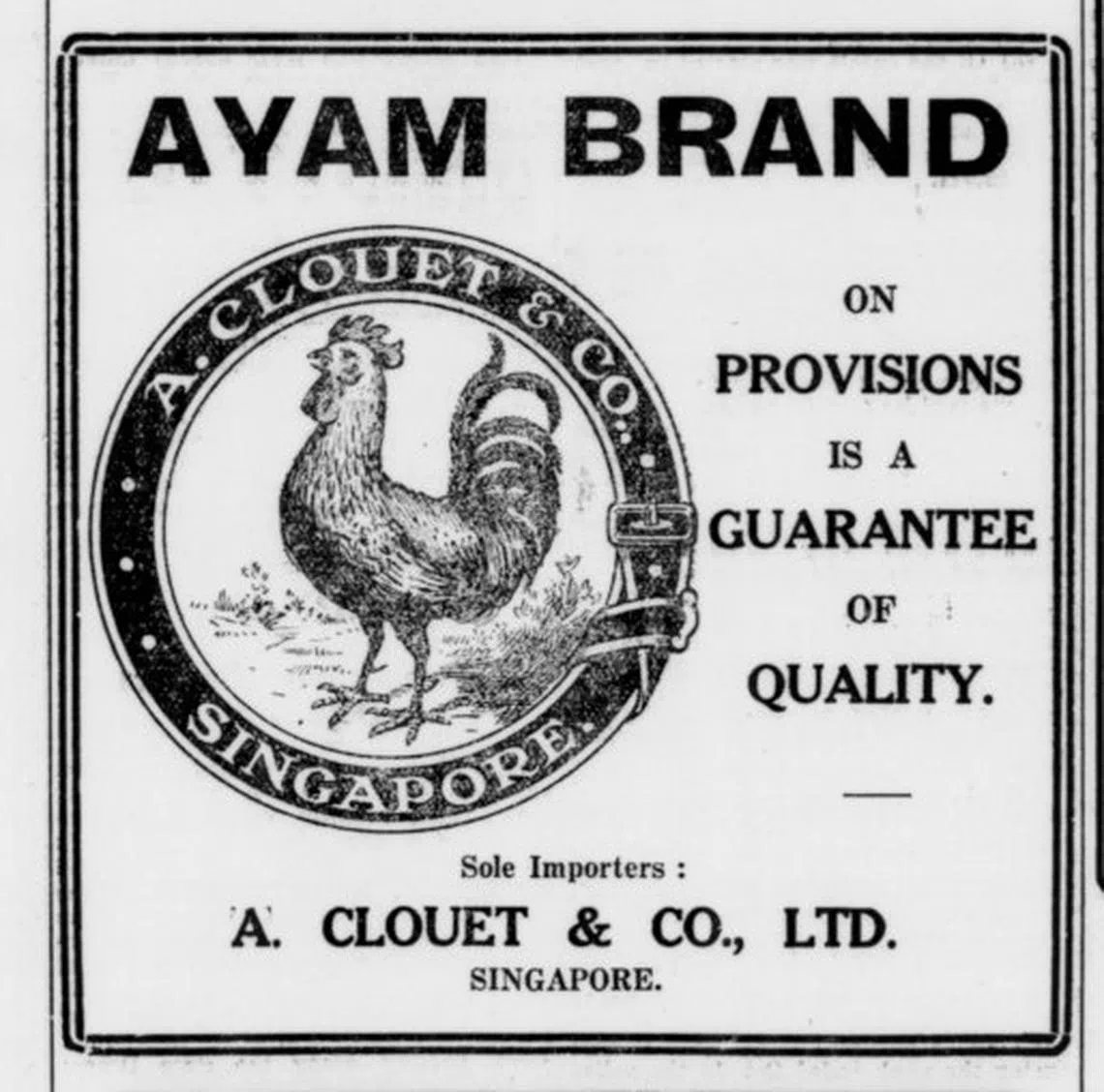
An Ayam Brand advertisement in The Straits Times on Nov 15, 1929. The brand’s logo features a rooster, reflecting its French origins, while the name “Ayam” comes from the Malay word for chicken.
PHOTO: ST FILE
2. Boustead Singapore
Founded in 1828, Boustead Singapore holds the distinction of being the nation’s oldest continuous business.
The company was started by Edward Boustead, who was born in Yorkshire, England. Company records have him as arriving in Singapore on March 13, 1828, on board the British ship Hindustan. Shortly after his arrival, he set up Boustead & Company along the Singapore River.
“Trading tropical commodities such as spices, flavours, seeds, nuts, saps, resins, medicinal herbs and oils, Boustead & Company was a key player in the commodity trade between the Far East and Europe,” says the company’s website.
Beyond making his mark in business and the community, Boustead was also the editor and co-founder of The Singapore Free Press, which was launched in 1835 and ran till 1869. It was revived in 1884 and in 1946, was bought over by The Straits Times. In 1962, The Singapore Free Press merged with The Malay Mail.
What began as a merchant trading house is now a modern infrastructure-related engineering and technology group, with operations in energy, real estate, geospatial technology and healthcare.
Mr Wong Fong Fui, chairman and group chief executive officer of Boustead since 1996, recalls how deeply entrenched the company was in the daily lives of Singaporeans.
“Many older Singaporeans would be very familiar with Boustead,” he says. “Boustead brought in many everyday brand names that Singaporeans are familiar with, such as HSBC, Shell, Cadbury’s, Del Monte, Gillette, Johnnie Walker, Moet & Chandon, Nestle, Procter & Gamble and Ovaltine.”
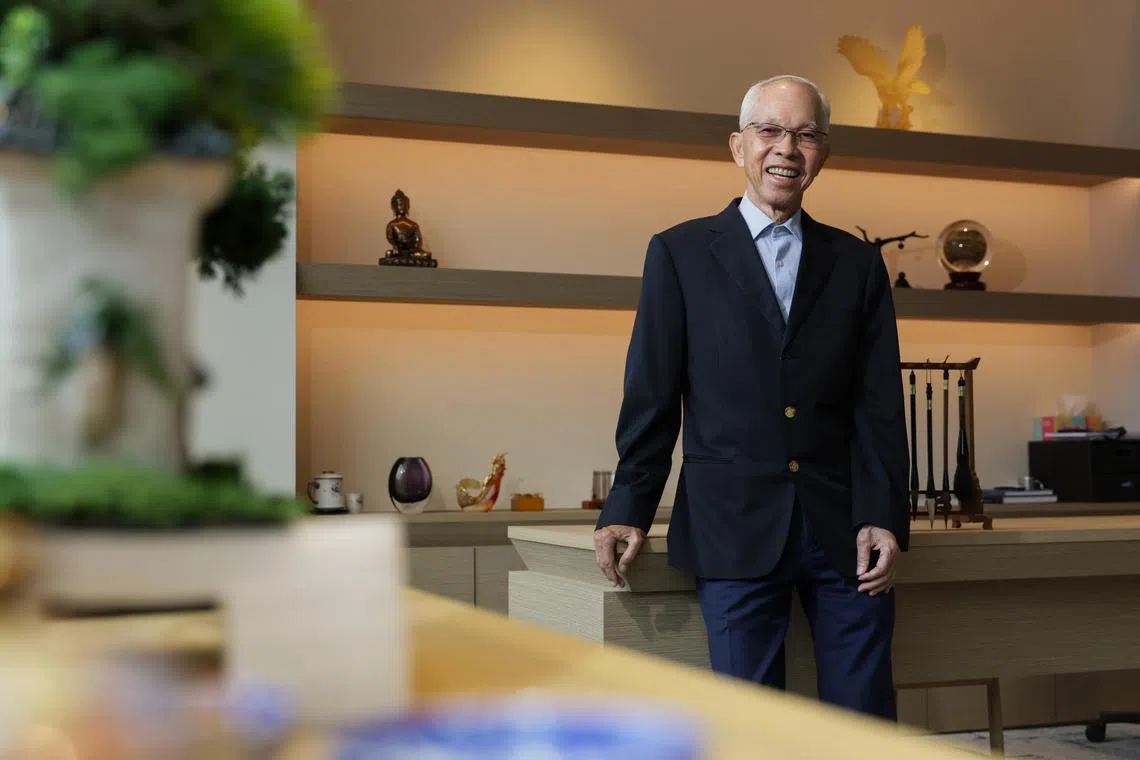
Mr Wong Fong Fui, Boustead Singapore’s chairman and group chief executive officer, says a big reason the company has lasted this long is how it runs its business and how it sees its place in the world.
ST PHOTO: GIN TAY
Boustead also played a foundational role in building Singapore’s economy, he says. Among its investments were The Straits Trading Company, renowned in the early 1900s for producing the world’s purest tin, and the Tanjong Pagar Dock Company, which eventually evolved into PSA International, now a global port operator.
The company endured many historic upheavals. “We survived the Great Depression, World War I, World War II, all the major financial crises, and more recently, the Covid-19 pandemic.”
This resilience is core to the Boustead identity. In the financial year of 1975, its first as a public-listed entity, it brought in $70.8 million; revenue in the financial year of 2024 was $767.6 million.
Boustead underwent its own upheaval with corporate restructuring in the 20th century, including two significant splits in 1960 and 1973 as the political landscapes in Britain, Singapore and Malaysia changed. It was listed on the Singapore Stock Exchange in 1975 as Bousteadco Singapore and renamed Boustead Singapore in 1997.
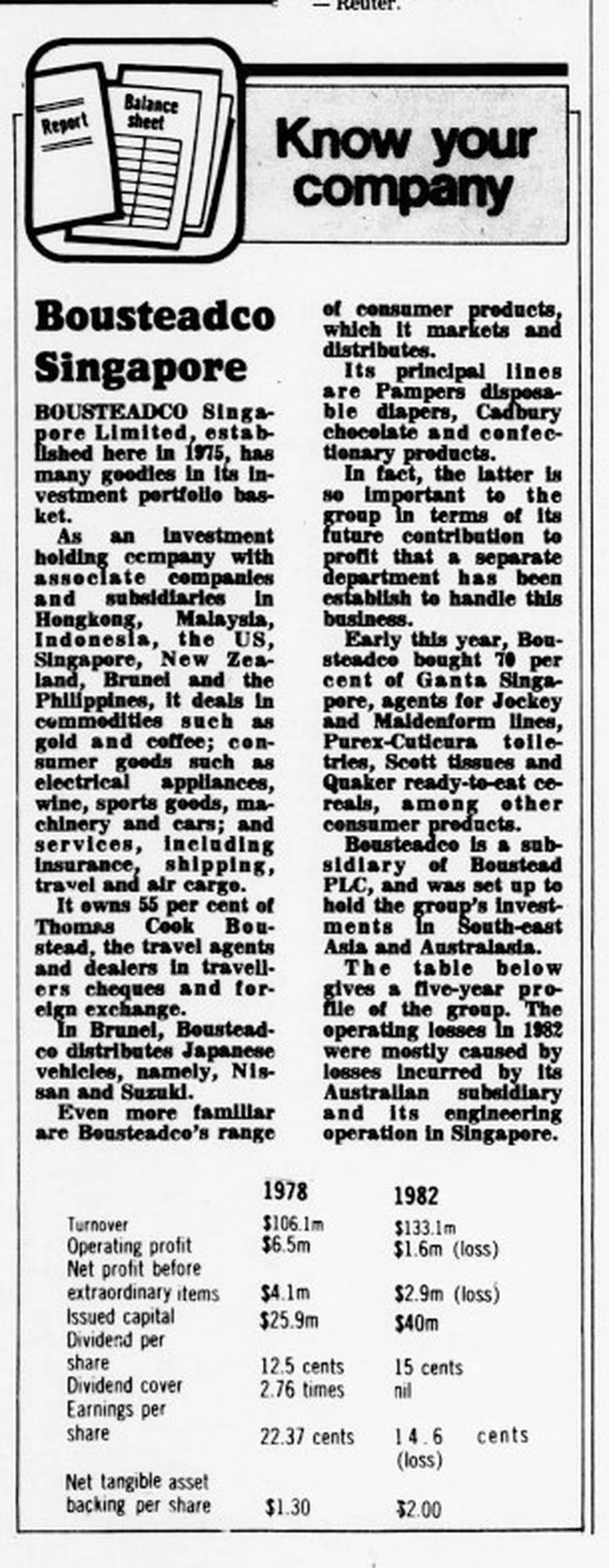
An article about Boustead Singapore, then known as Bousteadco Singapore, in The Straits Times on Feb 25, 1984.
PHOTO: ST FILE
The group has expanded into new sectors. In 1996, it established Boustead Projects, its largest subsidiary, focusing on real estate solutions. A year later, it launched Boustead International Heaters, a specialist provider within its energy engineering division.
In 2008, the company celebrated its 180th anniversary with an 800-guest dinner and launched Boustead 1828, a commemorative book chronicling its rich history.
A big reason it has lasted this long is how it runs its business and how it sees its place in the world, Mr Wong says.
“The Boustead way prioritises the pursuit of business with a greater purpose, and is about creating sustainable shared socio-economic value instead of maximising short-term profit,” he says. “It also promotes adaptability and resilience, as well as favours longevity over sentimentality.”
3. B.P. de Silva Jewellers
In 1872, Ceylonese merchant Balage Porolis de Silva opened a shop in High Street that he called B.P. de Silva Jewellers. It is one of Singapore’s earliest luxury brands.
De Silva, who was born in 1850 in the city of Galle, in Ceylon (now Sri Lanka), had travelled extensively with his father when he was 19, visiting countries in Asia, Europe and the United States. He settled in Singapore, a trading hub, and his shop in High Street sold items such as Sri Lankan gemstones and lacquerware.
The jewellery business flourished and the company gained prominence in 1890 when Britain’s Prince Arthur, the Duke of Connaught and Strathearn, became its first royal client. In the decades that followed, the jeweller crafted bespoke pieces for royalty across the region, including from Thailand and Johor, and beyond.
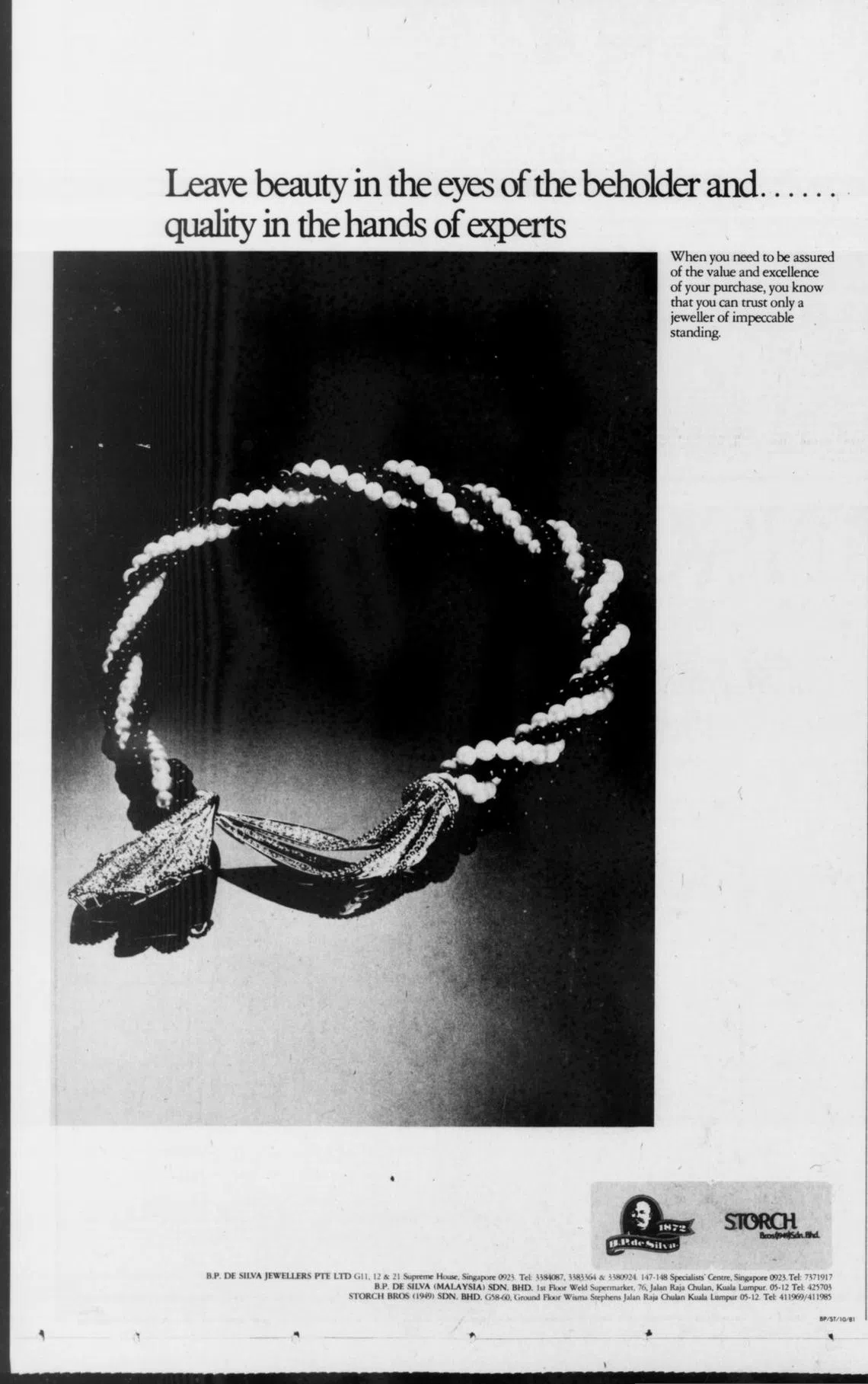
An advertisement by B.P. de Silva Jewellers in The Straits Times on Jan 31, 1981. The jeweller is one of Singapore’s earliest luxury brands.
PHOTO: ST FILE
Known in its early years for jewellery, watches and objets d’art, the brand has since evolved to focus on fine and high-end jewellery.
Ms Shanya Amarasuriya, the brand’s creative director and a fifth-generation descendant of the founder, says: “To have been in business continuously for as long as we have is a testament to all the people and teams that have come before us. We are grateful and constantly inspired by our rich heritage.”
Today, B.P. de Silva specialises in sapphires, through bespoke and ready-to-wear jewellery collections, as well as rare diamond cuts and other natural gemstones.
“Something we want to achieve during our fifth generation is to bring the name of Singapore to the global fine jewellery scene,” Ms Amarasuriya says.

Ms Shanya Amarasuriya, creative director of B.P. de Silva Jewellers and a fifth-generation descendant of its founder, says the firm is constantly inspired by its rich heritage.
PHOTO: B.P. DE SILVA JEWELLERS
In pursuit of that goal, the brand has showcased its work at international events such as the Doha Jewellery and Watches Exhibition, and the Couture Show in Las Vegas in 2024.
Its designs have appeared on red carpets, most recently in 2025, when American comedian-actress Ali Wong wore its Horizon Royal Diamond Earrings to the Golden Globes, and actress Elizabeth Olsen sported a pairing of Moonstone and Morganite rings to the Independent Spirit Awards.
Icelandic singer-songwriter Laufey donned its High Street Diamond Earrings, which has a Peranakan silhouette, during the weekend of the 2024 Grammy Awards.
The company has a team of about 20 and its flagship boutique is in Dempsey Road.
Ms Amarasuriya says: “We celebrated our 150th anniversary in 2022... We aim to continue the legacy of our previous generations and be around for another 150 years and beyond.”
4. Braddell Brothers
Braddell Brothers, founded in 1883, is one of the few law firms that can trace its roots to the country’s legal beginnings.
It was set up by two Irishmen, Sir Thomas de Multon Lee Braddell and Robert Wallace Glen Lee Braddell, sons of Sir Thomas Braddell, who served as the first attorney-general of the Straits Settlements. It is one of the oldest law firms in Singapore, after Woods & Davidson (now Dentons Rodyk), which was formed in 1861, and Donaldson & Burkinshaw, which was established in 1874.
Braddell Brothers’ managing partner Edmund Jerome Kronenburg notes that the firm has been associated with several distinguished figures in the legal and political spheres. They include former law minister E. W. Barker, former chief justice Chan Sek Keong and former Supreme Court justice Punch Coomaraswamy.
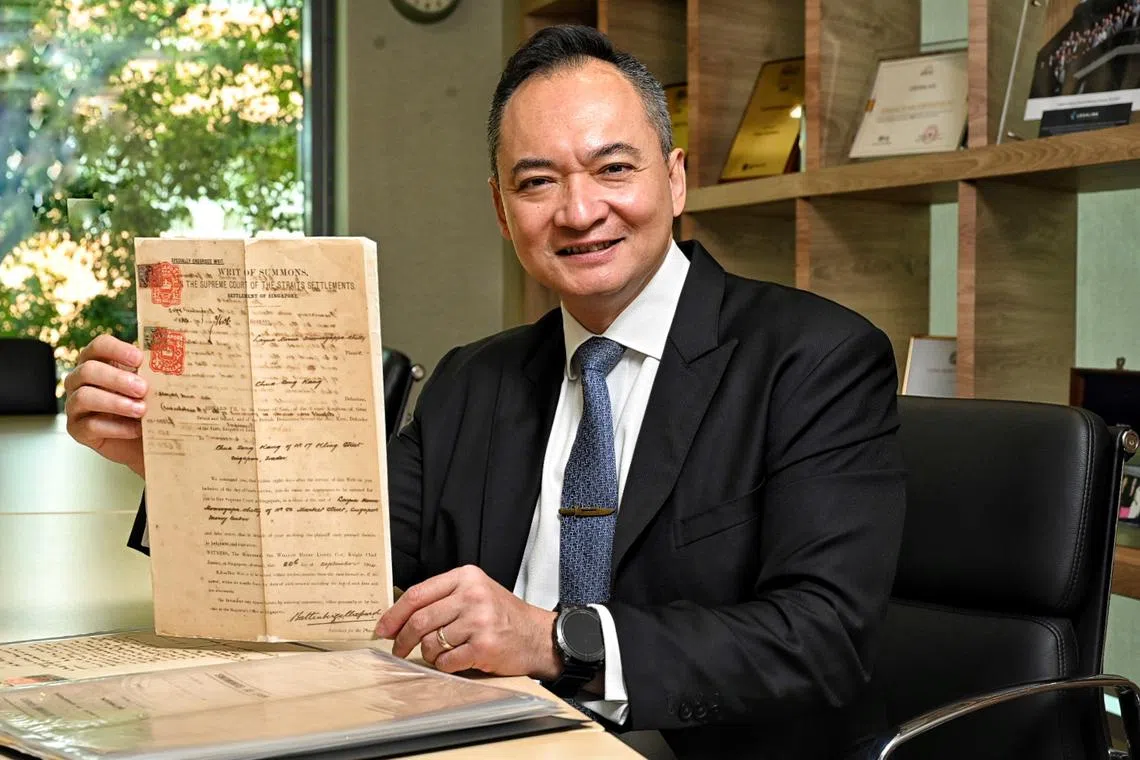
Braddell Brothers’ managing partner Edmund Jerome Kronenburg holding a writ of summons dated 1904.
ST PHOTO: DESMOND WEE
In 2009, the firm was reorganised into a specialised dispute resolution practice, focusing on complex civil, corporate and commercial disputes. It is especially recognised for its expertise in international arbitration, private client disputes, medical negligence and employment law, he says.
One of the firm’s recent milestones was securing a US$520 million (S$670 million) award in a Singapore-seated arbitration at the Singapore International Arbitration Centre, while successfully resisting a US$2.5 billion counterclaim by a foreign state-owned corporation.
Today, Braddell Brothers operates from its Beach Road office with a team of 17, including lawyers and support staff. The firm continues to evolve, integrating legal generative artificial intelligence tools into its practice and adopting flexible work arrangements.
“Building on its long legal heritage,” says Mr Kronenburg, “the firm remains committed to continuous improvement and innovation in its relentless, ethical pursuit of justice.”

The Straits Times published an article on April 3, 1917, about the retirement of Mr T. J. M. Greenfield, a lawyer with Braddell Brothers.
PHOTO: THE STRAITS TIMES
5. Wearnes Automotive
In 1906, two Australian brothers in Singapore started C.F.F. Wearne & Co, which is now Wearnes Automotive, and one of Singapore’s oldest automotive distributors.
Charles Frederick Foster Wearne and his younger brother, Theodore James Benjamin Wearne, moved to Singapore in 1889 and 1892 respectively to set up the motor company.
Singapore saw the first petrol-powered motor vehicles arriving at the end of the 19th century. From 1906 through to the 1920s, C.F.F. Wearne & Co became the agents for brands like Oldsmobile, Rolls-Royce and Ford. By 1912, it had been renamed Wearne Brothers, and became Wearnes Automotive in 2010.
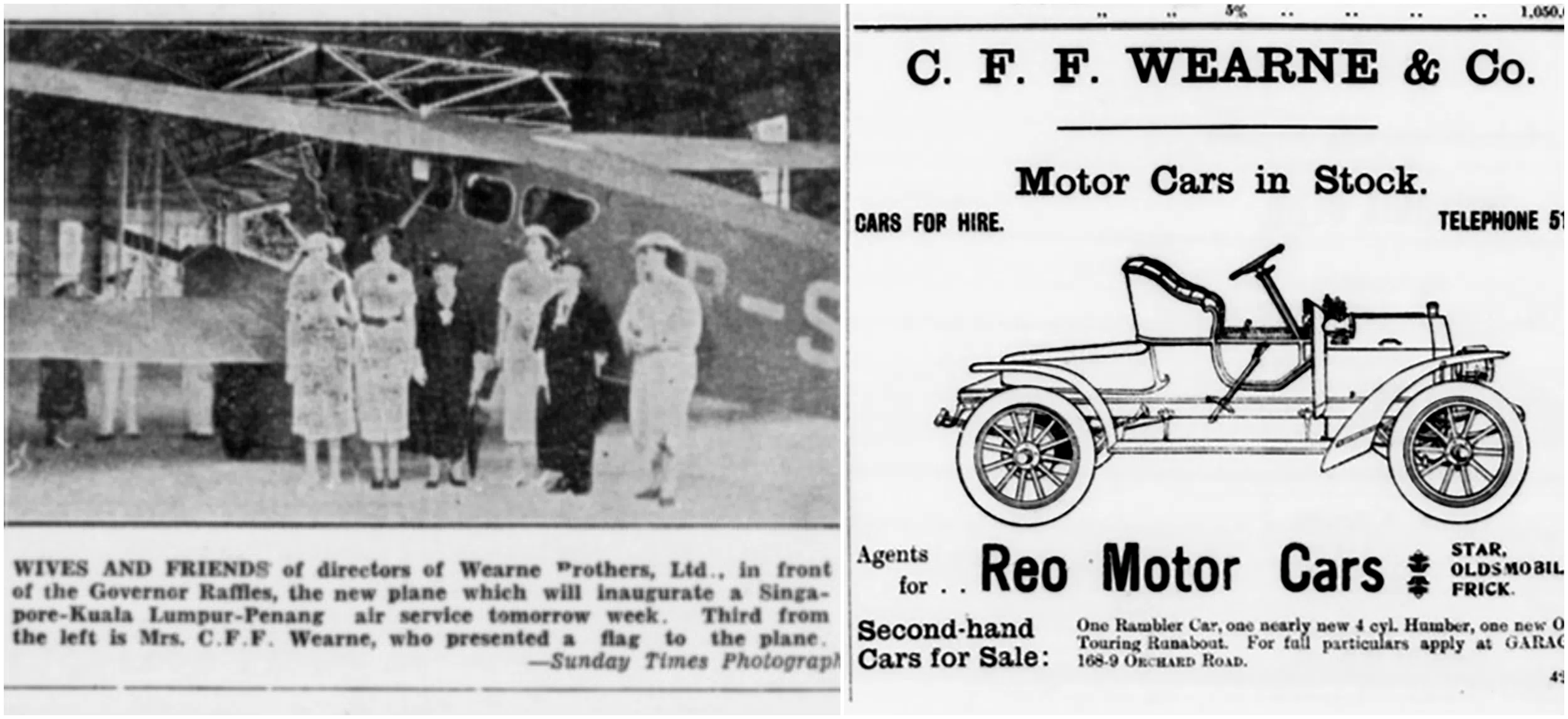
A photo published on June 20, 1937, shows wives and friends of Wearne Brothers directors in front of a new plane, as well as a C.F.F. Wearne & Co advertisement on April 30, 1907.
PHOTOS: ST FILE
Wearnes played a key role in shaping Singapore’s early automotive industry. In the 1960s, it was involved in local car assembly. By the 1980s, it had repositioned itself as an automotive retail dealer. Today, it operates in eight markets in Asia and represents 20 global brands. They include Volvo, Bentley, Jaguar, Aston Martin, Bugatti and Land Rover, and motorcycle brands like Ducati and Harley-Davidson.
Chief executive officer Andre Roy says the company’s long and storied history is deeply intertwined with Singapore’s economic growth, reflecting its commitment to innovation and progress.
He cites milestones such as the company’s expansion into South-east Asia in the 1920s and the launch of Wearnes Air Services, a commercial airline linking Singapore and Malaya, which ran from 1937 to 1941, as examples of its pioneering spirit.
“Most Singaporeans would have driven, ridden, or travelled in a vehicle sold by Wearnes, underscoring the integral role we play in the everyday lives of Singaporeans and its lasting impact on the nation’s automotive landscape,” he says.
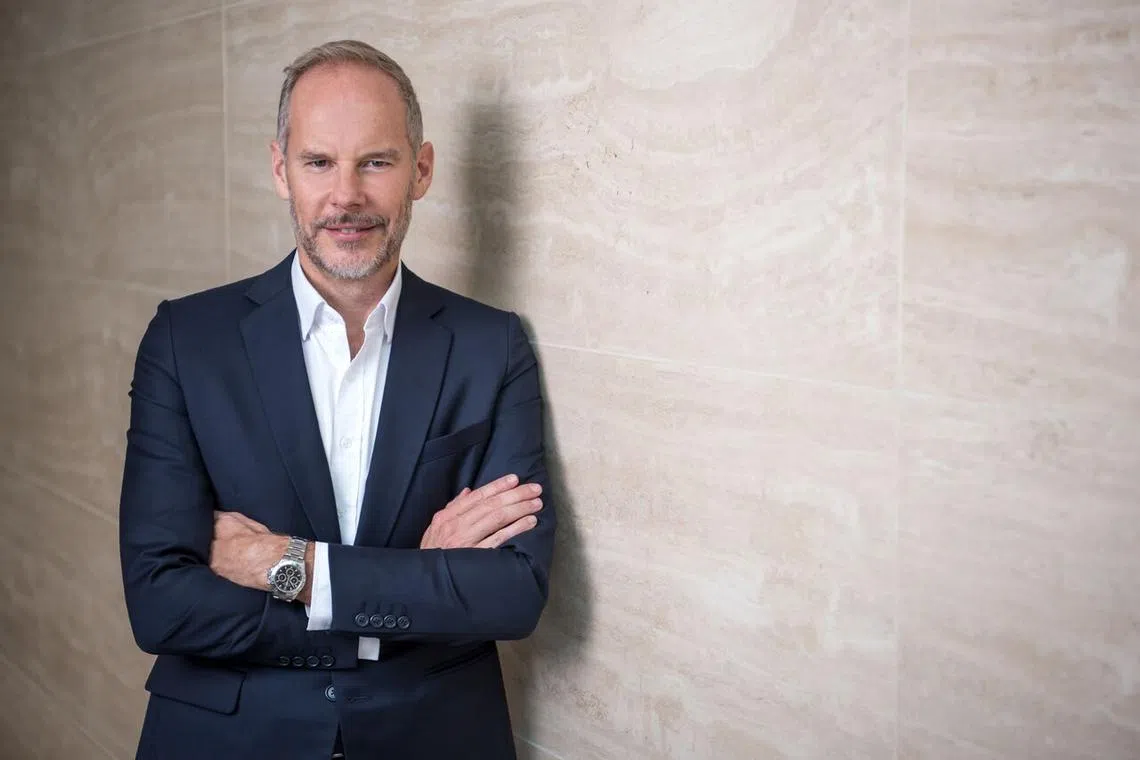
Mr Andre Roy, chief executive officer of Wearnes Automotive, says most Singaporeans would have travelled in a vehicle sold by the firm.
PHOTO: WEARNES AUTOMOTIVE
Apart from its enduring legacy, the company takes pride in its vibrant present, “affirming that we are far from being a shadow of our glorious past”.
The company continues to thrive as a leader in the luxury automotive sector. In 2024, the company saw 38 per cent year-on-year sales growth for Volvo, alongside high-profile launches for Polestar, Aston Martin and Lotus. It also opened its newly renovated Harley-Davidson showroom in Leng Kee Road.
It will celebrate its 120th anniversary in 2026.
“This upcoming anniversary is a testament to our enduring legacy and commitment to growth,” says Mr Roy. “Together, we will continue to build on our rich history and shape the next chapter of our story.”
Benson Ang joined The Straits Times in 2014 and is lifestyle correspondent. He has been a journalist since 2008. He writes lifestyle and entertainment features, as well as concert and theatre reviews.


